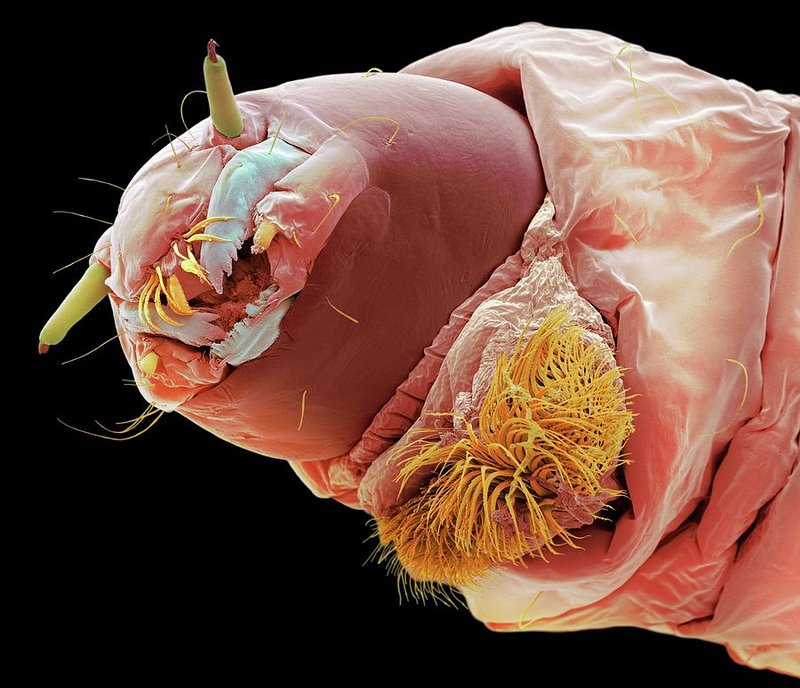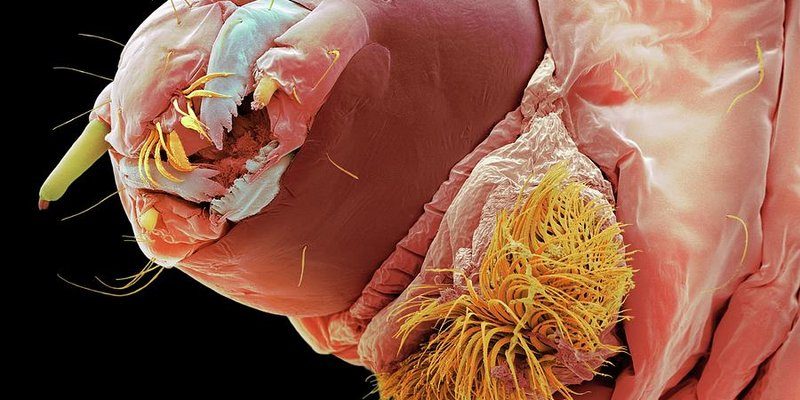
Bloodworms, which are the larval form of midge flies, are often found in freshwater habitats. They have a striking red color due to their hemoglobin content, which allows them to thrive in low-oxygen environments. But how exactly do these little creatures interact with other microfauna in their ecosystems? To put it simply, bloodworms are like the busy waiters in a restaurant, serving a specific purpose while also depending on others in the ecosystem for survival. Let’s dive into the intricate world of bloodworms and their relationships with other tiny critters.
The Role of Bloodworms in Freshwater Ecosystems
Bloodworms play a crucial role in their ecosystems. They are not just random guests; they’re an essential part of the food web. As larvae, they feast on organic material, including decaying plant matter and algae. This feeding behavior helps with nutrient cycling. When bloodworms break down this organic material, it becomes more accessible for bacteria and other microorganisms, creating a lively environment for more diverse life forms.
Moreover, bloodworms serve as a food source for various animals. Perhaps you’ve seen a fish nibble at them while swimming. Larger fish, amphibians, and even some birds rely on these larvae for nourishment. It’s a classic case of “you scratch my back, I’ll scratch yours.” The presence of bloodworms can indicate a healthy ecosystem, as they thrive in clean environments where organic material is abundant. Without them, the balance in these habitats could easily tip.
Interactions with Bacteria
Here’s the thing: bloodworms don’t live in isolation. They share their watery homes with a variety of microorganisms, especially bacteria. In fact, bloodworms benefit from the bacteria that break down decaying matter, which makes nutrients available in the water. This bacterial community helps decompose waste and organic matter, creating a rich, nourishing environment for bloodworms.
As bloodworms consume organic material, they also excrete waste, which is rich in nutrients. This waste becomes a feast for bacteria, promoting their growth and activity. Think of it as a circular economy in micro form, where every organism contributes to the health of its environment.
Symbiotic Relationships
Not all interactions are competitive. Some relationships are symbiotic, meaning both parties benefit. For example, bloodworms provide a habitat for certain bacteria that thrive in their presence. In return, these bacteria assist bloodworms by breaking down food particles and enhancing their nutrient intake. It’s a perfect example of how interconnected life can be, even at a microscopic level.
Competition with Other Microfauna
While bloodworms have many friends in their pond life, they also face competition. Other microorganisms, like nematodes and other larvae, vie for the same food sources. This competition can affect their growth and population density. Picture a crowded restaurant: if too many customers show up at once, some might not get served. Similarly, when food is limited, bloodworms must compete fiercely.
This competitive aspect is crucial. It drives evolution and natural selection. Those bloodworms that can adapt to find food in unconventional ways may thrive, while others might struggle. In many ways, competition keeps their population in check, ensuring that not one species dominates the ecosystem.
Impact on Aquatic Plants
Bloodworms have a unique relationship with aquatic plants. As they munch on organic debris, they indirectly promote plant health. Decomposing matter is essential for nutrient availability, which supports plant growth. Healthy aquatic plants, in turn, provide oxygen and shelter for various organisms, including bloodworms themselves. It’s a win-win situation.
However, if bloodworm populations get too high, they can impact the balance. An excess might lead to overconsumption of organic material, which could starve some plants. Here again, balance is vital. This delicate interplay showcases how one species can affect the entire ecosystem, often in unexpected ways.
Soil Interaction
Let’s not forget about soil! Bloodworms don’t just confine themselves to water; they can also influence the soil environment, especially in wetlands. The nutrients that they release into the soil can enhance plant growth, contributing to a more vibrant ecosystem. This is particularly important in areas where land meets water, as it supports diverse life forms both above and below the surface.
Overall Ecosystem Health
In summary, bloodworms are not just adorable little larvae; they are vital players in their ecosystems. Their interactions with bacteria, competition with other species, and relationships with plants all contribute to the overall health of freshwater habitats. By participating in nutrient cycling and serving as food for other organisms, bloodworms support the delicate balance of life.
When we think about conservation efforts, understanding these relationships becomes crucial. Protecting bloodworm populations and their habitats ensures that the entire ecosystem thrives. After all, when one part of the web is strong, the whole web becomes more resilient.
So, the next time you’re near a pond or a stream, take a moment to appreciate the complexity of life happening right under your nose. Bloodworms, while small, play an important role in maintaining the balance of their ecosystems. By supporting life through their interactions with other microfauna, they remind us that every creature, no matter how tiny, has its part to play in the grand tapestry of nature. Keeping ecosystems healthy is essential for not just bloodworms but for all life forms that rely on these interconnected habitats. Let’s celebrate and protect these hidden gems of the natural world!

